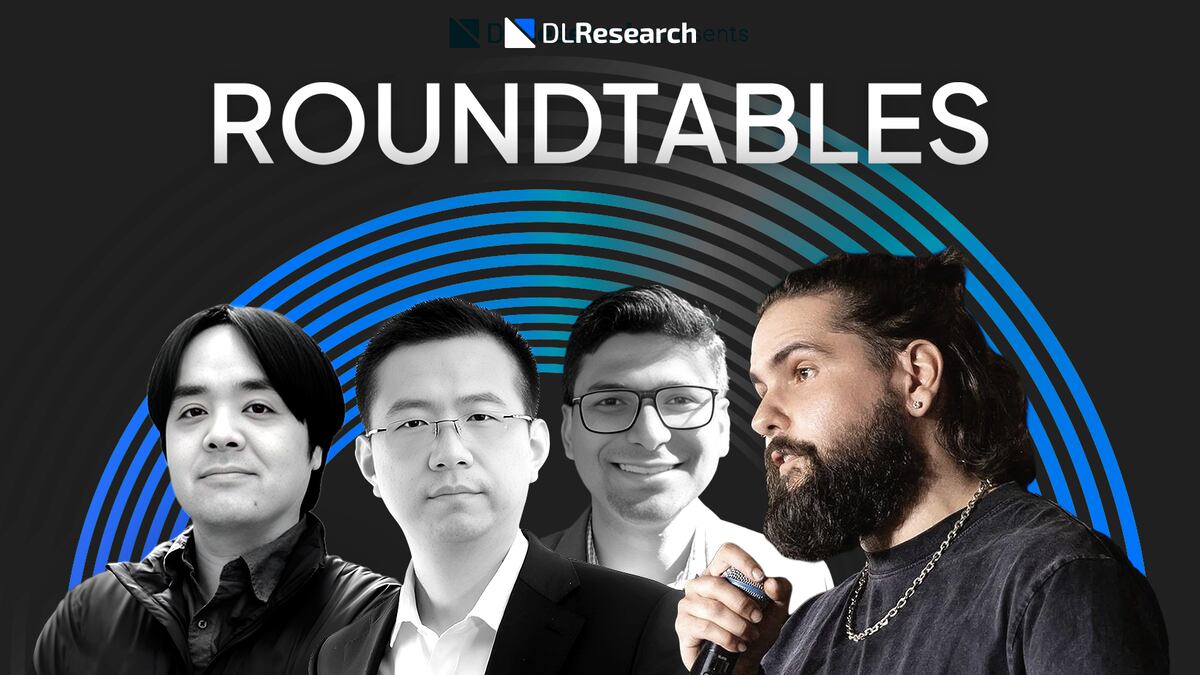Moderated by:

Phillip brings a decade of experience scaling emerging technologies. After successful exits in 3D printing and virtual reality, he led growth strategies at top web3 projects like Coinlist and Decentraland. Before joining CrossFi, he served as Head of Growth at Binance. Today, he focuses on bridging crypto and traditional finance through real-world payments and user-first infrastructure.
Interviewees:

Tony Gu is a founding partner at NGC Ventures, one of the world’s leading blockchain investment firms. With a sharp focus on transformative technologies, Tony has backed early-stage web3, DeFi, and infrastructure projects, helping shape the next era of digital finance. He combines technical depth with strategic vision to identify high-impact ventures, nurture ecosystems, and scale platforms globally.

Ken Deeter is a partner at Electric Capital, a venture firm backing early-stage crypto and web3 founders. With a background in engineering and distributed systems, he brings a rare mix of technical insight and product acumen to the investment world. Before Electric Capital, Ken held senior roles at startups and tech giants, equipping him to help founders scale while staying grounded in the values of open-source innovation.

Abhishek Saxena leads infrastructure and DeFi investments at P2 Ventures, formerly Polygon Ventures. He focuses on early-stage projects across decentralised infrastructure, enterprise adoption, and next-gen DeFi. A builder-turned-investor with deep roots in web3, Abhishek applies a first-principles approach to backing founders, from ideation to product-market fit, across the decentralised economy.
As decentralised finance matures, the distinction between crypto-native innovation and traditional financial systems is fading. Fuelled by breakthroughs like restaking, smart wallets, decentralised identity, and tokenised real-world assets, the ecosystem is on the cusp of making a major leap toward real-world utility and institutional integration. To explore this evolution, Phillip Alexeev, Chief Growth Officer at CrossFi, moderated a roundtable discussion with three industry leaders: Ken Deeter of Electric Capital, Abhishek Saxena of P2 Ventures (formerly Polygon Ventures), and Tony Gu of NGC Ventures. Together, they unpacked what’s next for decentralised capital markets, what needs to change, and how the space can reach its full potential.
From infrastructure to imagination
For years, web3 builders focused on laying the groundwork — scaling chains, deploying new consensus models, and expanding blockspace. But the conversation has shifted.
“We’re at a point where the pendulum is swinging from infrastructure back to applications,” said Ken. “Ethereum mainnet transactions are cheaper than they’ve been in years. That unlocks experimentation. Memecoins, for instance, are like crypto’s user-generated content — something impossible back in 2021.”
Tony agreed, noting the pace of change across both consumer and institutional fronts.
“Technology is evolving at lightspeed,” he said. “But it’s really about value creation. How can real-world industries — financial services, especially — benefit from this tech? I think we’re witnessing the early stages of Wall Street moving onchain.”
Abhishek added that DeFi remains the gateway for most onchain users.
“Most everyone starts with DeFi,” he said. “Right now, we’re in the innovation stage. Some products are net-new, like yield-generating stablecoins. Others are making traditional systems better, faster, and cheaper onchain.”
CrossFi, for example, has focused on real-world integrations from the start, building infrastructure that allows crypto to flow through existing systems without changing how users or institutions operate day to day.
The adoption conversation
As the discussion turned to what’s driving — or holding back — adoption, the panellists circled back to three key points: regulatory clarity, user experience, and infrastructure that supports both.
“The ecosystem matures when builders, capital allocators, and users converge,” said Abhishek. “But regulation is still the bottleneck.”
Tony echoed the need for clarity.
“There should be a checklist — ten things a builder can follow to know they’re safe,” he said. “That’s how innovation grows. Without clarity, you’re building while constantly watching your back.”
Phillip pointed out that improved UX is just as critical for onboarding.
“Think about using a CrossFi card — the user doesn’t care what chain it’s on. They just want the transaction to go through. That’s what success looks like.”
Ken noted that most users won’t adopt DeFi if they’re forced to manage private keys or navigate complex interfaces.
“It’s hard to imagine a world where everyone wants to manage their own ledger,” he said. “Custodial solutions — if done right — might actually be the best fit for most people.”
Utility and hype
The panellists also explored what separates sustainable protocols from fleeting hype.
For Ken, it comes down to one question: Would people still use your product without incentives?
“You have to be really careful about understanding what demand would be there without any incentives,” said Ken. “That’s the kind of thing we focus on.”
Tony added that for startups to succeed long-term, they need to strike a difficult balance: build fast enough to stay relevant in short market cycles, but with long-term sustainability in mind. “You need to manage this,” he said. “If you don’t manage it well, you might just be gone.”
Abhishek said conviction plays a major role, especially in a space prone to hype cycles.
“My biggest advice would be do not fumble into the hype,” he said. “Have a strong thesis of where you want the world to be, and then build towards that.”
It’s a mindset that CrossFi shares — having built through multiple cycles while staying focused on long-term use cases that solve real-world pain points.
Designing for real users
That focus on sustainability also ties into how products are built. The panellists agreed: Real adoption depends not just on functionality, but on making web3 tools easy to use.
“You won’t see a wallet, you won’t see a seed phrase,” said Tony, describing how blockchain applications should feel. “That seamless integration with web2 is critical.”
Abhishek agreed, noting that while infrastructure plays a role, simplicity at the user level is what ultimately drives traction.
“Infrastructure enables good UX, but we need consumer-facing applications that make it very simple,” he said. “You don’t need to care what’s happening in the backend.”
Ken pointed to platforms like Pump.Fun and Friend.tech as examples where abstraction and accessibility helped unlock new behaviours.
“Whatever you think of memecoins, those interfaces taught the industry something: When you remove friction, people show up,” he said.
CrossFi’s user-first approach mirrors this insight — from real-time crypto-to-fiat tools to payment experiences that hide blockchain complexity while keeping the benefits.
What comes next?
Looking ahead, the panellists offered their take on what’s needed to move decentralised capital markets from experimentation to mainstream relevance.
For Tony, the long-term opportunity lies in global capital coordination.
“Right now, every country has its own financial markets — different rules, different settlement systems, different access,” he said. “Blockchain can change that. It can create a single, unified market where capital flows more efficiently, regardless of borders.”
Abhishek agreed, pointing to tokenised treasuries and stablecoins as early signs of that shift.
“We’ve already seen TradFi starting to adopt DeFi rails,” he said.
Still, he acknowledged that regulatory uncertainty remains a limiting factor for broader institutional participation.
Ken said the next phase of DeFi will be defined by product-market fit, not just protocol design.
“We’re going to go from building all of this financial tooling, to building for actual people and use cases — people who want to borrow, lend, invest, raise capital,” he said.
CrossFi continues to explore this future by building bridges between permissionless DeFi and compliant, real-world financial infrastructure — a model it sees as essential for scaling decentralised markets.
Ultimately, the speakers agreed that the rails are now being laid, and what happens next depends on how well the ecosystem builds for real users, solves real problems, and earns trust.

DL Research Roundtable Series are brought to you in partnership with PR Genius - a strategic communications powerhouse that bridges innovative public relations with growth hacking expertise. Specialised in transforming brands across tech, web3, and digital landscapes, the agency has worked with leading industry clients, crafting headline-grabbing narratives that drive meaningful media exposure and accelerate business growth.
